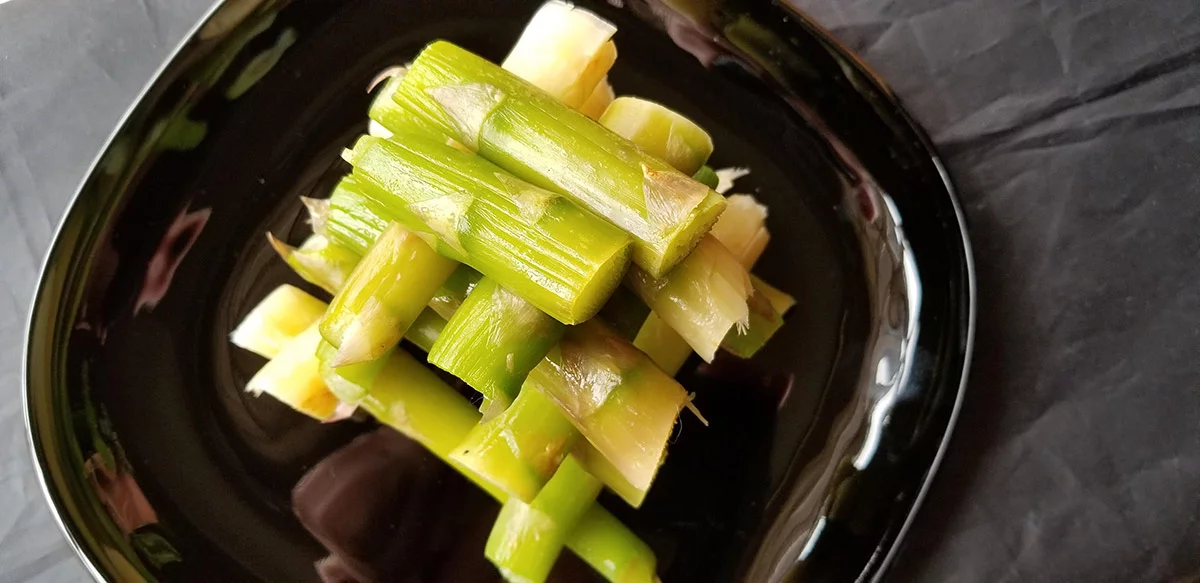My mother-in-law, Alyce, was a great one. Man, was she a gas, the way just being a character is worth the watch. Along her way, she taught me some fun things about cooking, too, food traditions that profitably might serve us all during these difficult days.

Plus, she addressed a sort of “Groundhog Day” issue — the movie, not just the forthcoming date — at the family dinner table: How can the kitchen make the same food appealing for three or four days in a row?
Using leftover food from the fridge
While there might be running in place when there’s no pandemic, there sure is eating in place when there is.
Alyce and my father-in-law lived on Lake Erie, just northeast of Cleveland. Most everyone in the family being very Roman Catholic, we sat down to many a Friday fish fry. So, in time, this Colorado boy learned about his first walleye and coho, yellow perch and whitefish.
One afternoon, Alyce announced that for dinner that night we were going to have “mustgos,” to me a hitherto unfamiliar Lake Erie fish.
When we sat down to the dining room table, however, it was strewn with a whole bunch of this-and-that: a casserole of scalloped potatoes from last night reheated and on a trivet, small bowls of pepperoncini, olives and salami slices, and even some three-bean salad that had come from the grocer a couple of days before.
“Where’s the mustgos?” I asked. “We’re having them,” Alyce said. “It’s when everything in the refrigerator must go.”
A subgenre of mustgo was “froosh.” (I have no idea of its correct spelling, this preparation of food being solely in the oral tradition.) Froosh was when Alyce would take leftover meat — often enough, about 50% of a ginormous steak that my father-in-law had grilled the evening previous — dice it up, and cook it with chopped onions, lots of leftover food, such as vegetables and second-day baked potatoes mixed in, everything flavored with a bit of garlic powder and a few splashes of beef broth.
Like the mustgos, froosh was always delicious.

Today’s recipes are mustgos. They’re from what I once had laying around in my refrigerator (and freezer), I trust imaginatively brought forth. If you take a look around, you’ll have your own versions.
To my way of thinking (and buying), the smartest purchase in the grocer’s herb section is what’s called “poultry blend” or “poultry mix,” several sprigs each of fresh thyme, sage and rosemary. Unless you need a lot of any of those for a particular recipe, the amount of each in a poultry blend is about perfect for any of several other recipes.
The sage — even in “poultry blends,” almost always more than you’d ever need — flavors unsalted butter to make a sauce that is a delicious topping for plain leftover pasta. It is an Italian standard, especially with ravioli.
Sage Brown Butter Sauce

Makes enough to dress about one-half of what you’d have leftover from a pound of dried pasta that’s previously been cooked. Use a skillet with low sides, rather than a small saucepan with high sides, so that the butter has a chance to evaporate its water and slowly brown.
Ingredients
1/2 stick (4 tablespoons) unsalted butter
20 leaves fresh sage; if large, torn
1/2 pound dried plain pasta, any sort, already cooked, rewarmed
Directions
In a skillet over medium heat, melt the butter then add the sage leaves. Lower the heat to low and allow the butter both to brown itself and to crisp the sage leaves. Dress the pasta with the sauce.
Most cooks neither trim nor peel their fresh asparagus spears. However, everybody breaks or cuts off the woody ends, the where-it-turns-white of their asparagus spears. Got to. But then you’re left with a bunch of stubs, right? To toss away, right? Got not to.
Spin Yotam Ottolenghi’s recipe for Asparagus Vichyssoise using just those lopped off lops (instead of the whole spears that his original recipe calls for). It’s terrific soup, if warmed for wintertime temps, or cooler for spring outdoor lunches.
Asparagus Trimmings Vichyssoise
Adapted from Yotam Ottolenghi’s cookbook “Plenty”; serves 4.
Ingredients
2 tablespoons unsalted butter
1 small white onion, peeled and chopped, or 2 medium leeks, white parts only, cleaned and chopped
1 medium waxy potato (such as Yukon Gold), peeled and chopped
3/4 pound asparagus spear ends (about 15-20), chopped
1/4 teaspoon dried thyme
1/2 teaspoon kosher salt
4-6 cups vegetable or low-sodium chicken broth
Greek yogurt, plain, whipped, for garnish
3-4 asparagus spear tips, if you have them also, blanched, sliced longways, for garnish
Directions
In the butter and over medium-high heat, in a large saucepan or pot, cook the onion or leek until they lose their color and just begin to brown. Add the potato, asparagus ends, the thyme and salt, and the broth; cook everything, the cover ajar, for 30 minutes, or until the vegetables are very tender. Stir occasionally.
Purée or use an immersion blender and pass through a sieve to keep back any stringy parts and serve with a dollop of whipped yogurt and, per bowl, one blanched, thinly sliced asparagus tip.
You may reach Bill St John at [email protected]
